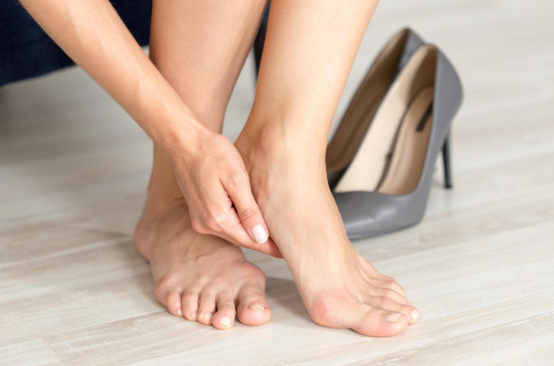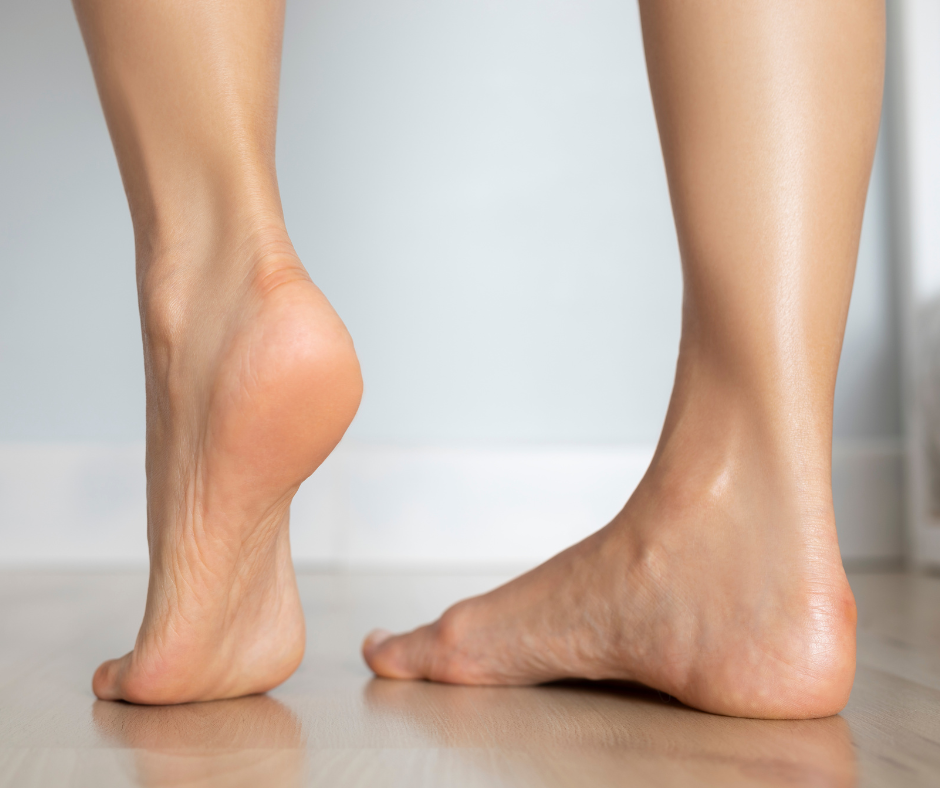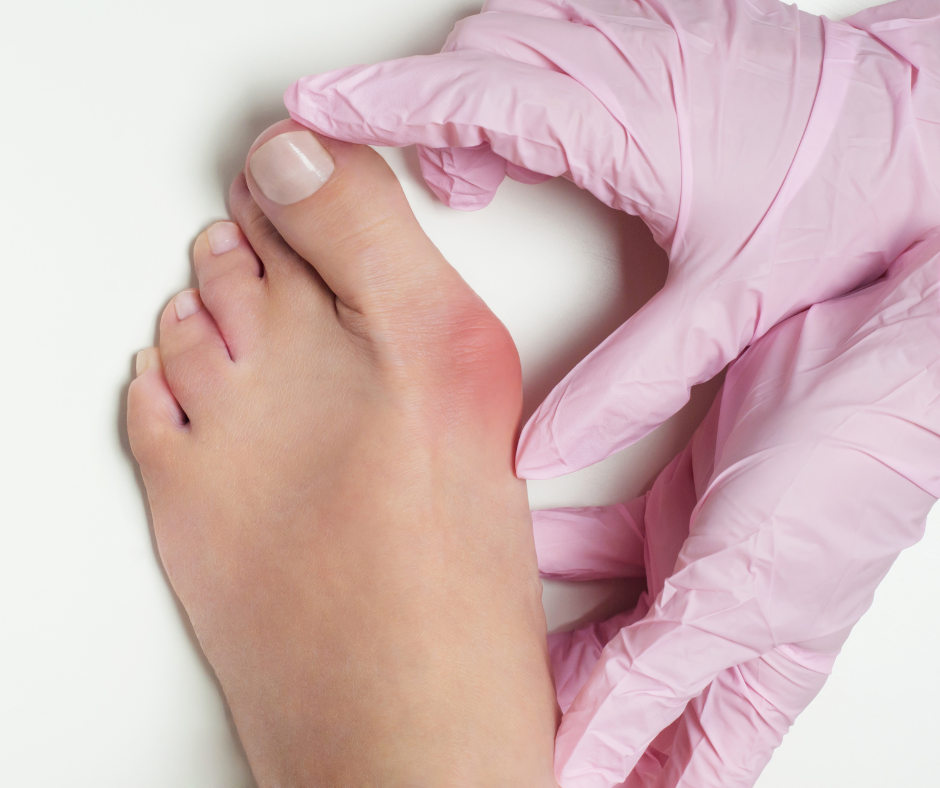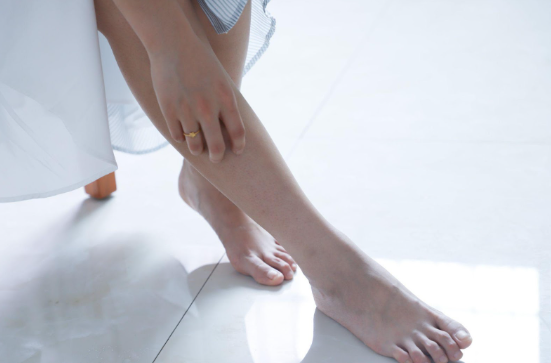A COMPLETE GUIDE TO UNDERSTANDING PLANTAR FASCIITIS
The Complete Guide to Understanding Plantar Fasciitis

Plantar fasciitis, or heel spur syndrome, is a common yet widely misunderstood illness that affects millions of individuals worldwide. Whether you're an athlete, a busy professional, or a person who enjoys being active, knowing about plantar fasciitis is critical for maintaining foot health and general well-being.
Read on to understand the causes, symptoms, diagnosis, treatment options, and preventive measures related to heel spur syndrome.
What Is Plantar Fasciitis?
Plantar fasciitis is a foot condition that gets its name from the plantar fascia, which becomes inflamed. The plantar fascia, a thick band of tissue that connects the heel bone to the toes, is what helps our feet work as they do. It also absorbs shock and supports the foot's arch during weight-bearing exercises.
When subjected to repetitive strain or excessive stress, the tissues can become inflamed and damaged, developing heel spur syndrome. This condition typically develops as sharp or stabbing heel pain, especially during the first few steps after prolonged rest periods.
The plantar fascia may undergo microscopic tears or inflammation due to various factors, including prolonged standing, high-impact activities, obesity, improper footwear, and underlying biomechanical issues such as flat feet or high arches. Tight calf muscles or Achilles tendon can also contribute to increased tension on the plantar fascia, worsening symptoms of plantar fasciitis.
Causes
This type of heel pain often develops due to repetitive stress or overuse of the plantar fascia. Some common causes include:
- Prolonged Standing: Jobs or activities requiring long-standing periods can strain the plantar fascia excessively.
- High-Impact Activities: Running, jumping, or other high-impact sports can lead to micro-tears in the plantar fascia, causing inflammation.
- Improper Footwear: Wearing shoes with inadequate support or poor cushioning can contribute to heel spur syndrome.
- Foot Structure: Flat feet, high arches, or abnormal walking patterns can increase the risk of developing plantar fasciitis.
- Obesity: Excess body weight puts added pressure on the feet, increasing the strain on the plantar fascia.
Symptoms
The most common symptom of plantar fasciitis is heel pain, particularly during the first steps in the morning or after prolonged periods of rest. Other symptoms may include:
- Pain in the Arch of the Foot: Discomfort may also be felt along the bottom of the foot, extending from the heel to the toes.
- Stiffness: The affected foot may feel stiff, especially after inactivity.
- Swelling: Inflammation of the plantar fascia can lead to swelling around the heel.
- Tight Achilles Tendon: Plantar fasciitis can cause tightness in the Achilles tendon, which connects the calf muscles to the heel bone.
Diagnosis
Healthcare providers typically diagnose heel spur syndrome based on a physical examination and a review. Diagnostic tests, such as X-rays, ultrasounds, or MRI scans, can help identify the potential causes of foot pain and assess the extent of tissue damage. During the examination, healthcare providers may palpate the plantar fascia to identify areas of tenderness and evaluate the foot's range of motion.
Treatment Options
Treatment for plantar fasciitis aims to alleviate pain, reduce inflammation, and promote healing of the affected tissue. Standard treatment options include:
- Rest and Activity Modification: Avoiding activities that exacerbate symptoms and giving the foot adequate rest can help reduce strain on the plantar fascia.
- Ice Therapy: Applying ice packs or frozen water bottles to the affected area can help reduce pain and inflammation. Ice therapy should be applied for 15-20 minutes several times daily.
- Nonsteroidal Anti-Inflammatory Drugs (NSAIDs): Over-the-counter medications such as ibuprofen or naproxen can help relieve pain and reduce inflammation.
- Stretching Exercises: Stretching the calf muscles and plantar fascia can help improve flexibility and reduce tension in the affected area.
- Orthotic Devices: Shoe inserts or orthotic devices can support and cushion the foot, reducing strain on the plantar fascia.
- Physical Therapy: A physical therapist can recommend specific exercises and techniques to strengthen the foot and ankle muscles and improve flexibility.
- Corticosteroid Injections: In some cases, corticosteroid injections may be administered to reduce pain and inflammation in the plantar fascia.
Preventive Measures
Preventing plantar fasciitis involves adopting lifestyle habits and practices that reduce the risk of developing the condition. Some preventive measures include:
- Wearing Supportive Footwear: Choose shoes with good arch support, cushioning, and shock absorption to reduce strain on the plantar fascia.
- Gradual Increase in Activity: Avoid sudden increases in physical activity or intensity, as this can put undue stress on the feet.
- Maintaining a Healthy Weight: Maintaining a healthy weight reduces the strain on the feet and lowers the risk of developing plantar fasciitis.
- Stretching and Strengthening Exercises: Incorporate regular stretching and strengthening exercises for the feet, calves, and Achilles tendon to improve flexibility and reduce tension in the plantar fascia.
- Proper Foot Mechanics: Pay attention to your walking and running techniques to ensure good foot alignment and reduce the risk of injury.
- Regular Foot Care: Inspect your feet for discomfort, blisters, or irritation and address them promptly to prevent further complications.
Final Words
Plantar fasciitis is a common foot condition that can cause severe pain and interfere with daily activities. Individuals can effectively manage the condition and reduce the risk of recurrence by understanding the details of plantar fasciitis. Early intervention, proper footwear, lifestyle modifications, and regular exercise are critical components of a comprehensive approach to preventing and managing plantar fasciitis.
If you persistent foot pain symptoms, consult
AZ Ortho for an accurate diagnosis and personalized treatment plan. We specialize in providing expert treatment for plantar fasciitis. Call us today at
(480) 697-4824 or
contact us online!






CONTACT US

GET IN TOUCH
Contact Us
Thanks for your message!
I'll get back to you as soon as I can.
Please try again later.
LOCATION
HOURS
Monday - Friday:
8:00 AM - 5:00 PM
Closed Weekends



